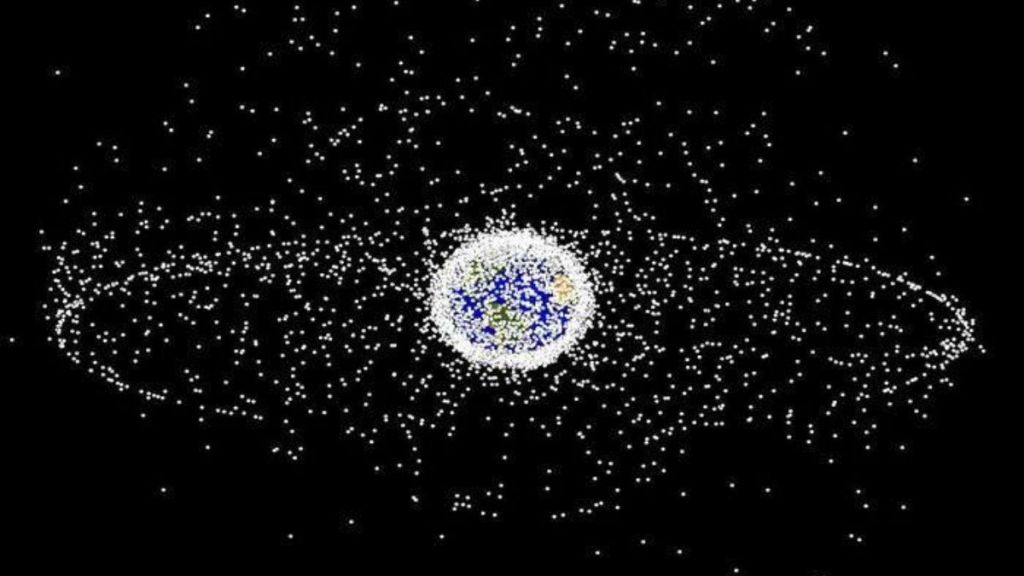The Universe, seemingly boundless, houses a grave issue amidst its expanse – space debris. It’s a challenge we don’t often see with the naked eye, but it exists, lurking beyond the clouds and far-reaching realms—nestling in low Earth orbit (LEO).
What constitutes this space debris?
“In essence, it embodies millions of fragments—relics of human innovation—comprising defunct satellites, remnants from spacecraft, minuscule paint specks shed by orbiting objects, and even the remnants of explosions that occurred in the vacuum of space. This congregation of fragments, moving at staggering speeds of up to 18,000 miles per hour, poses a threat—nearly seven times faster than a bullet, rendering current and future space missions and operations susceptible to grave risks,” explains Dr Srimathy Kesan, Founder, and CEO Space Kidz India.
According to her the genesis of this orbital graveyard can be attributed to various incidents, including the deliberate destruction of the Chinese Fengyun-1C spacecraft in 2007 and an inadvertent collision between American and Russian spacecraft in 2009. “Such occurrences have significantly augmented the debris population in LEO by nearly 70 percent, intensifying the perils for spacecraft navigating this domain,” she says.
Curbing this escalating threat demands collaborative efforts on a global scale. The responsibility to manage this challenge transcends national borders; it’s a collective obligation of every nation venturing into space. “As we confront this colossal problem, leveraging partnerships and unifying under a common goal becomes imperative,” she opines.
Enter the NASA Orbital Debris Programme —an initiative originating in 1979, aimed at reducing orbital debris generation, designing tools to monitor and eliminate existing debris. Yet, the magnitude of this quandary persists; approximately 6,000 tons of materials clutter LEO, rendering debris removal a costly and Herculean task.
Dr Srimathy Kesan says, “The absence of international space laws dedicated to debris clearance renders LEO a disconcerting analogy—the world’s largest garbage dump in space. However, hope glimmers on the horizon through collaborative endeavours and concerted efforts by spacefaring nations.”
Are there any companies helping remove the debris?
Yes. Numerous entities have delved into this realm, diligently researching, strategizing, and pioneering solutions. Companies such as Surrey Space Centre, Astroscale, Clearspace, Vyoma etc., stand at the forefront, innovating ways to mitigate this celestial litter.
“Surrey University, operating through its Surrey Space Centre (SSC), is actively engaged in pioneering initiatives aimed at combating space debris. Through projects like RemoveDEBRIS, launched to the International Space Station in 2018, the university coordinates with an international consortium, leveraging partnerships with leading aerospace entities like Airbus Defence and Space, SSTL, and others,” the CEO of Space Kidzs says.
The mission involves deploying advanced technology demonstrations to capture space debris and conducts experiments in low Earth orbit, showcasing Surrey University’s commitment to leading-edge space cleanup initiatives.
Space Debris & India
In a recent announcement, the Government of India highlighted the identification of 111 payloads and 105 space debris objects of Indian origin currently orbiting Earth. Recognizing the significant implications of this debris on future space missions, the Indian Space Research Organization (ISRO) has embarked on extensive studies to understand the impacts of proliferating space debris on the space environment. The proliferation of space debris, encompassing defunct satellites, rocket stages, and fragments from collisions, poses critical threats to operational satellites by potentially rendering them dysfunctional upon collision. This overpopulation of space objects, known as Kessler Syndrome, not only threatens operational satellites but also diminishes available orbital slots for future missions. To counter these challenges, ISRO has established initiatives like the System for Safe and Sustainable Operations Management (IS4OM) and Project NETRA, an early warning system, to continuously monitor and mitigate collision risks and detect hazards to Indian satellites.
Globally, efforts through forums like the Inter-Agency Space Debris Coordination Committee (IADC) and initiatives by agencies such as the European Space Agency (ESA) emphasize the need for sustainable space activities and the reduction of space debris. To address this growing concern, advancements in tracking, the use of reusable launch vehicles, and innovations in materials and satellite design stand as potential pathways toward managing and mitigating the risks posed by space debris.
“The quest to safeguard our celestial domain demands concerted action, transcending boundaries and ideologies. It’s time to take cognizance of this burgeoning issue, collaborate, innovate, and preserve the space environment for generations to come. After all, the cosmos is not just a playground for exploration; it’s a legacy we safeguard for posterity,” Dr Kesan states.


